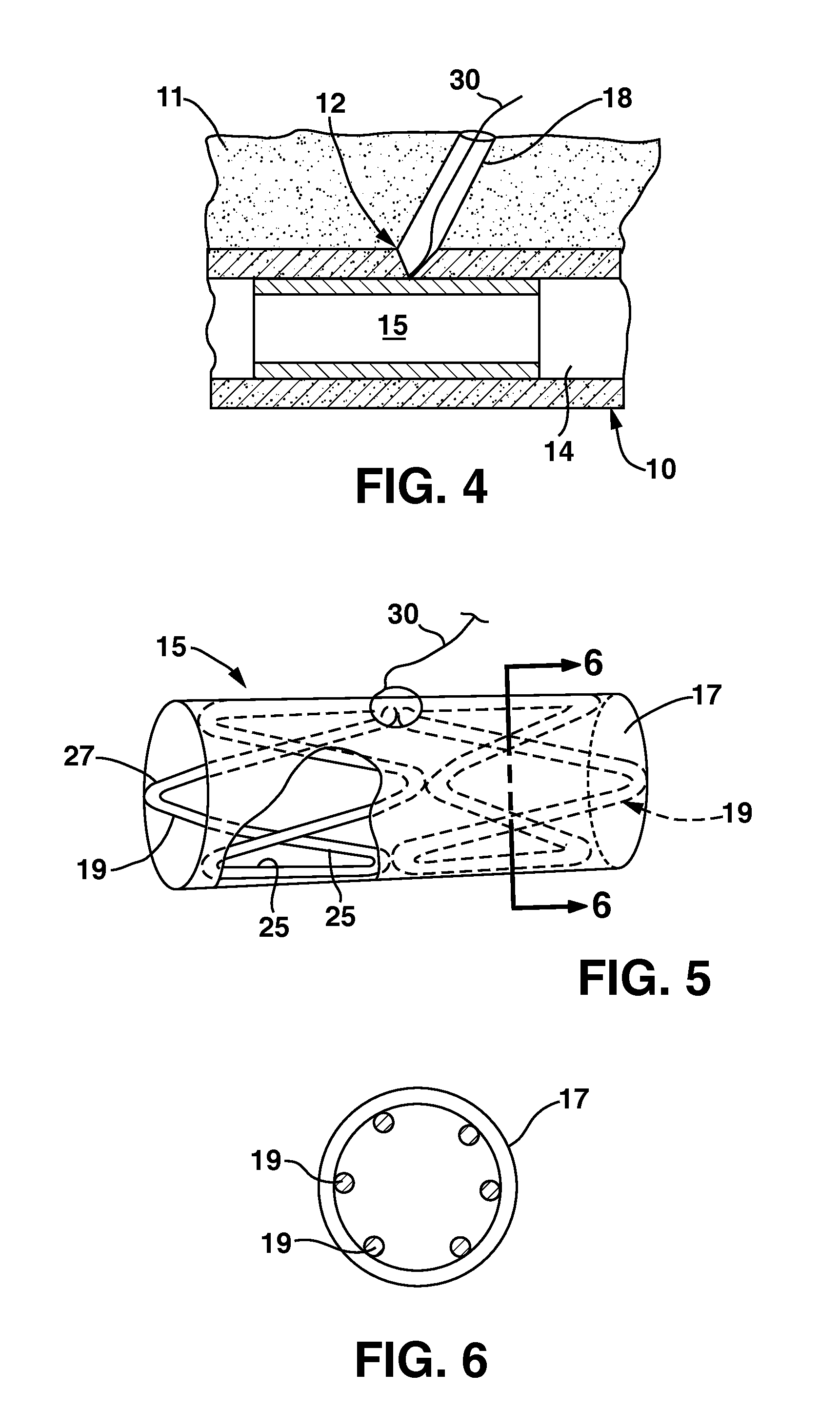Systems and Methods for Closing a Percutaneous Vascular Puncture
- Summary
- Abstract
- Description
- Claims
- Application Information
AI Technical Summary
Problems solved by technology
Method used
Image
Examples
Embodiment Construction
[0018]In the description of the invention, “proximal,” will refer to a direction away from the patient, that is, toward the operator of the device, and “distal,” will refer to the opposite direction, away from the clinician and toward the patient.
[0019]FIGS. 1-3 illustrate, diagrammatically, a segment of a blood vessel 10 (e.g., an artery) that has been punctured by a hypodermic needle (not shown) to form an arteriotomy 12 through which various wires, catheters and the like may be advanced and guided into the lumen 14 of the vessel in order to perform any of a variety of well-known intravascular procedures. As shown in FIG. 1, the typical shape of the resulting puncture in an artery is in the form of a slit that extends in a circumferential direction, resulting from the muscle structure of the artery in which the muscle fibers extend generally circumferentially. Typically, the needle puncture that initiates the arteriotomy is followed by subsequent, larger diameter instruments that ...
PUM
 Login to View More
Login to View More Abstract
Description
Claims
Application Information
 Login to View More
Login to View More - R&D
- Intellectual Property
- Life Sciences
- Materials
- Tech Scout
- Unparalleled Data Quality
- Higher Quality Content
- 60% Fewer Hallucinations
Browse by: Latest US Patents, China's latest patents, Technical Efficacy Thesaurus, Application Domain, Technology Topic, Popular Technical Reports.
© 2025 PatSnap. All rights reserved.Legal|Privacy policy|Modern Slavery Act Transparency Statement|Sitemap|About US| Contact US: help@patsnap.com



